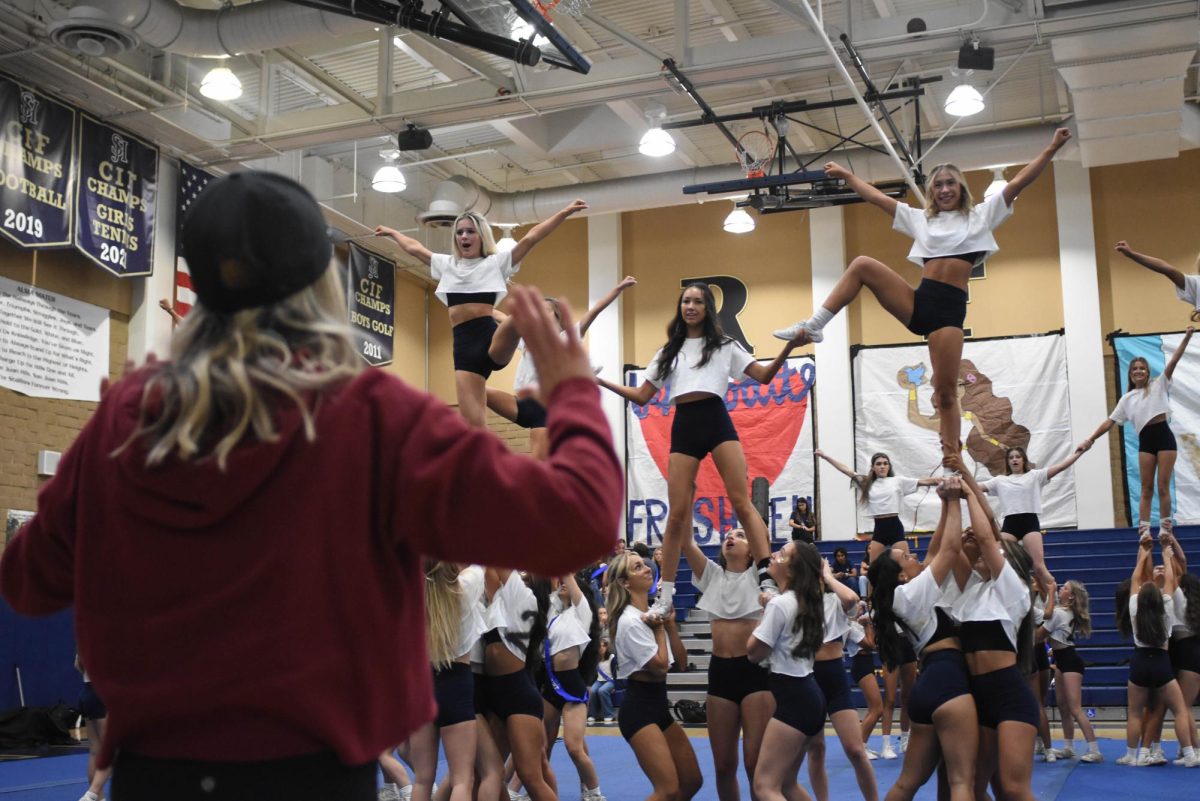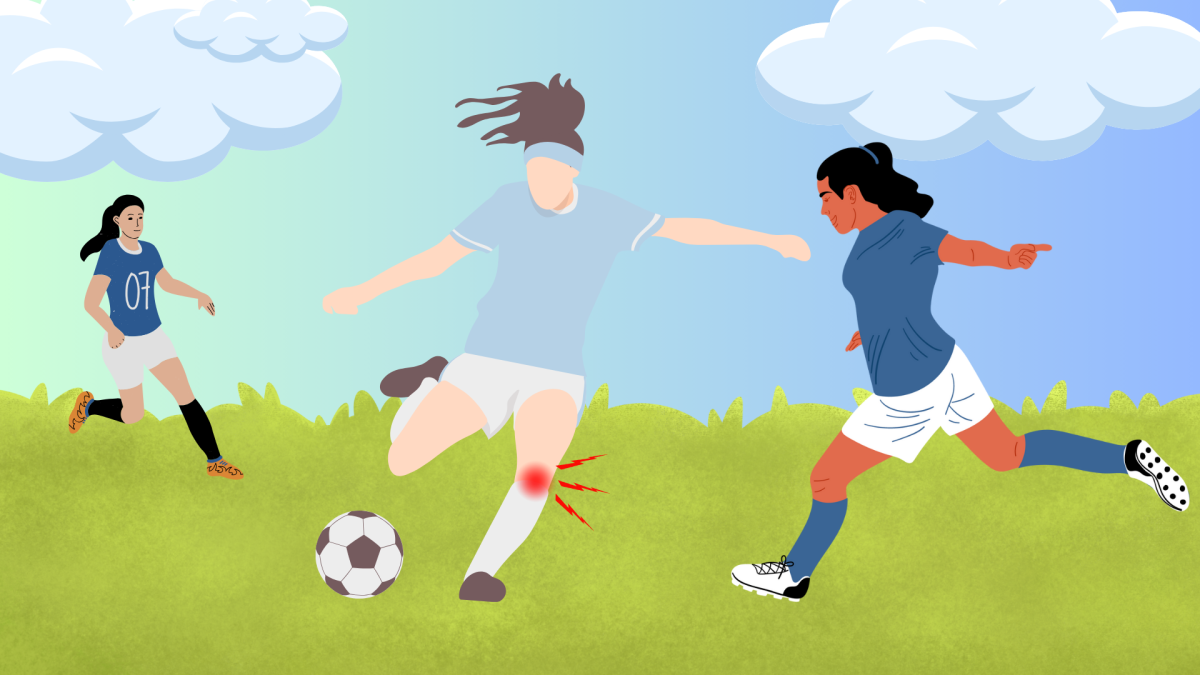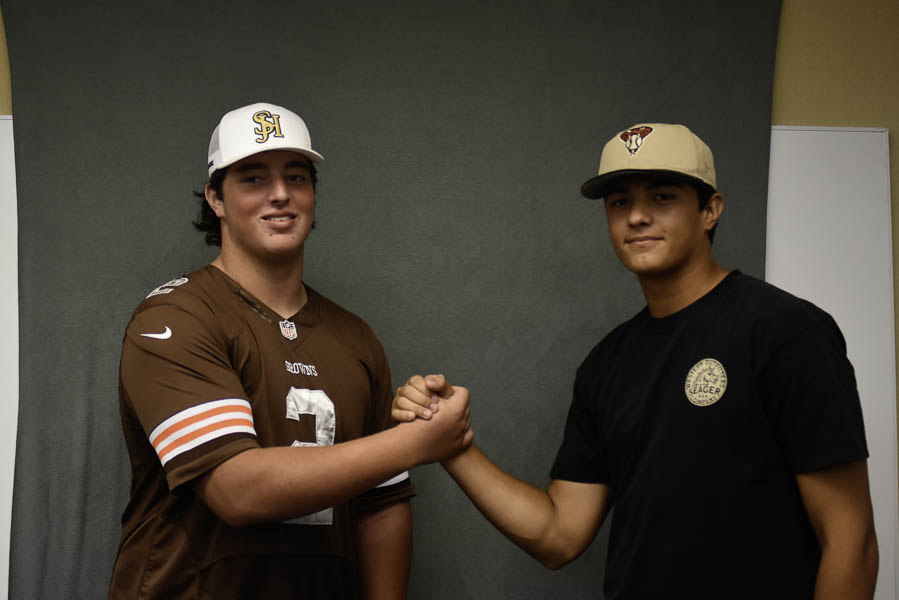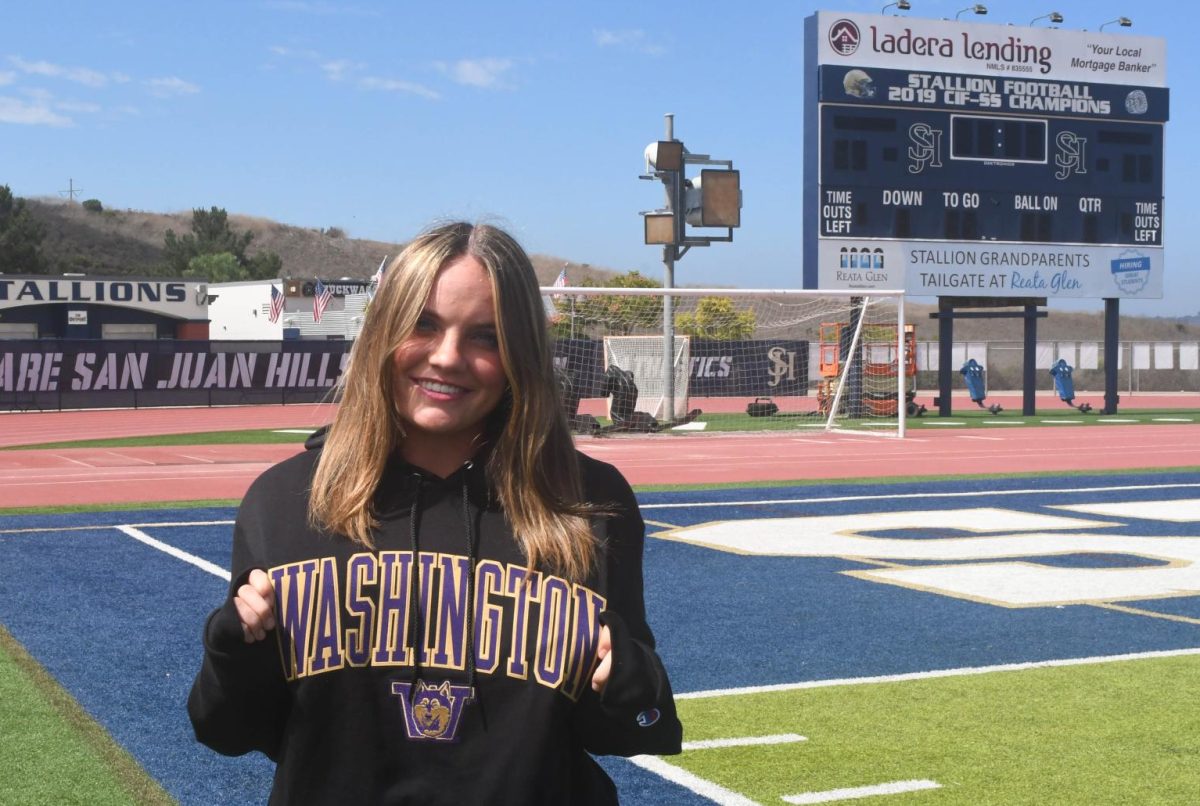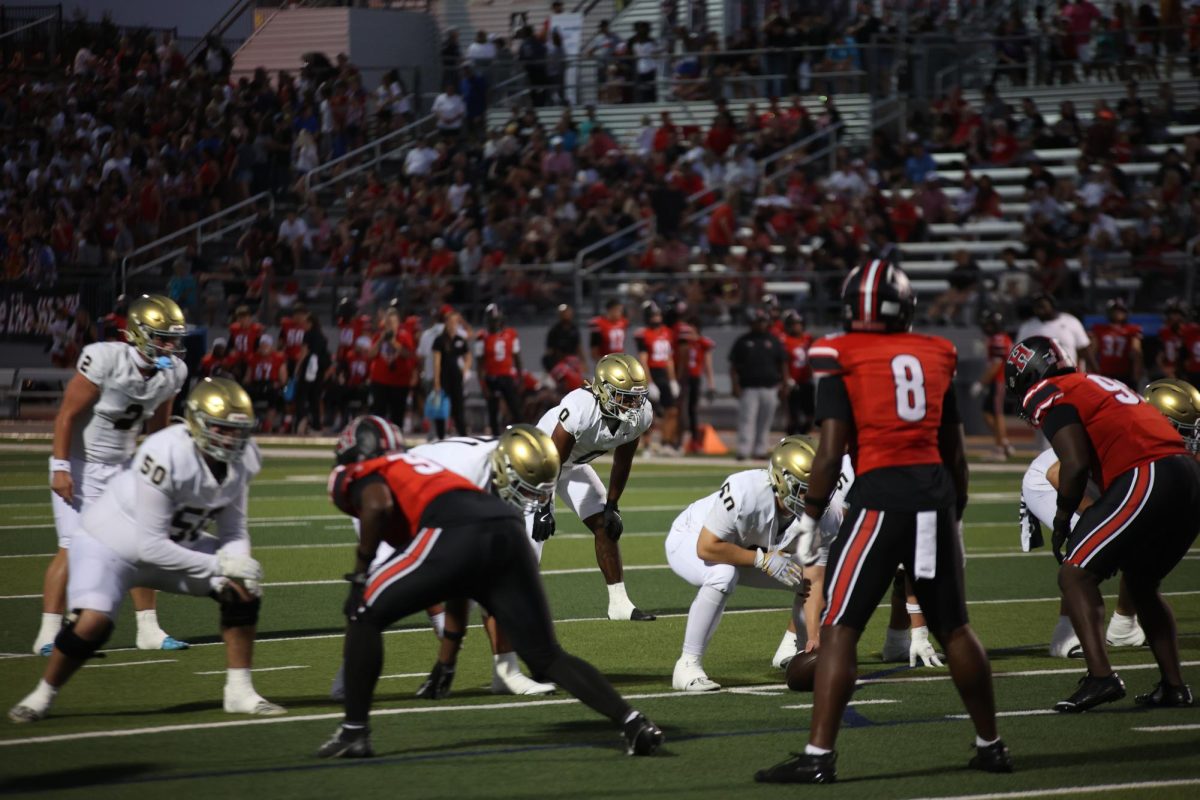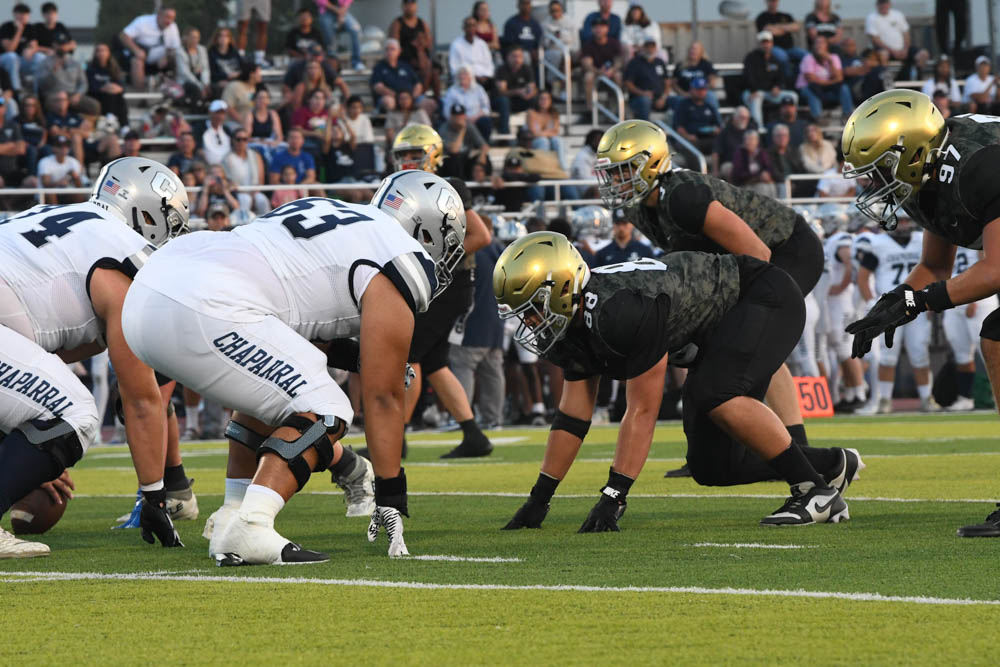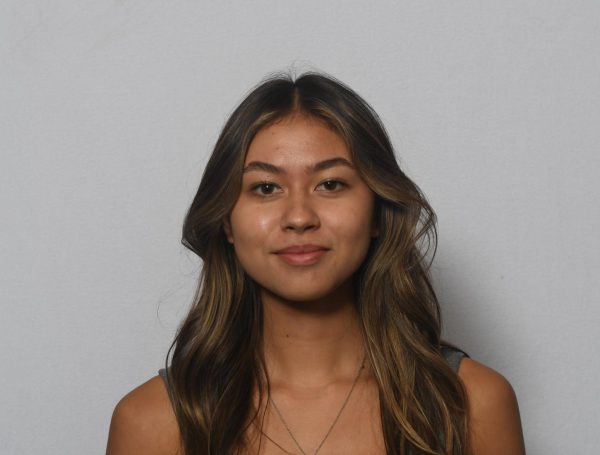Hard work, dance routines, and pom poms. Stallion Cheer practices rigorously to put on a show between downs and quarters.
Each week entire class periods are devoted for cheerleaders to work together and get ready for their next performance. However, many members of the team also partake in additional tumbling classes to develop their skills.
“We always have practice during fourth period throughout the week. We typically have a [football] game every single Friday. Outside of class, everyone goes to a tumbling class on their own time to improve their skills,” said Peyton Esparza (11).
For some, cheer is a factor that defines their identity. A cheerleader’s career can start as early as childhood and impact who they become in the future.
“I do cheer because it’s fun to cheer for my school and I’ve been doing it for so long. I’ve been doing cheer since I was 4 years old,” said Alexa Wolf (11).
The cheer squad can be seen wearing their designated cheer uniforms walking around campus or sitting in class during football or basketball game days.
“I love wearing my cheer uniform in class. Cheer is special because of the group of girls and the bond we have as a team,” said Emma Piil (11).
Beyond performing at pep rallies, sports games, and competitions, cheer forges friendships and bonds within the team.
“I like being a part of a large group because we are all friends on the team. It has also taught me to always have fun and form great friendships,” said Wolf.
Cheerleaders encounter psychological obstacles that can impact their execution. These mind-made hurdles are just another aspect of this sport that many of its athletes overcome and benefit from.
“The worst part [of cheer] would be the mental blocks that come with tumbling. Mental blocks are super common in cheer and can have a really harsh effect on your skills which makes it difficult to be able to just throw a pass without getting scared. Most of the time if I get a mental block I can’t really tumble for the rest of practice since the fear of falling or hurting myself is so overwhelming,” said Esparza.
Communication, problem-solving, and collaboration are key factors when it comes to pulling off cheer routines. These qualities are strengthened by their participation in cheer and apply to real-life experiences. Physically and personally, a cheerleader is always growing to meet the demands of the sport, gaining valuable traits along the way.
“In cheer, good communication is such an important aspect needed in order to be successful. Cheer has shown me that it’s okay to be wrong and be able to admit when you are the problem,” said Esparza.
Many spectators underestimate how physically demanding cheer is when in reality strength,
flexibility and endurance are integral traits of a high school cheerleader. Whether it’s a home or away game, the cheer squad does their best to fire up our crowds and fill SJHHS with spirit.

